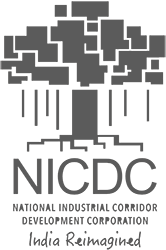India’s pharma industry vital for world’s vaccination programme
India has also the largest number of FDA approved plants outside the US, nearly 2,050 WHO-GMP approved pharma plants, and a number of European Directorate of Quality Medicines (EDQM) approved plants with state of the art technology. India's pharma and medical devices industry, the 3rd largest producer of pharmaceutical products by volume and 14th largest by value, benefits from the economies of scale derived from the huge domestic and export market, cheap labour, and low-cost manufacturing.

With its exports in FY20 pegged at US$ 18.3 billion and a growth rate at 7.57 per cent, India meets 62 per cent of the world's vaccination requirements, and 40 per cent and 25 per cent of generic drugs in USA and the UK, respectively, underlining the country’s pivotal role in catering to the world's healthcare needs.
India has also the largest number of FDA approved plants outside the US, nearly 2,050 WHO-GMP approved pharma plants, and a number of European Directorate of Quality Medicines (EDQM) approved plants with state of the art technology. Whereas the current market size of the medical devices sector in India is estimated to be US$11 bn in 2020, its share in the global medical device market is 1.6 per cent. The country ranks among the top 20 global medical devices market and is the 4th largest market in this segment in Asia after Japan, China and South Korea.
While both these sectors enjoy strong business fundamentals, the evolving pandemic scenario is challenging many established paradigms. Product priorities and many longstanding supply chain arrangements may have to be rejigged. Export and import bans, along with production and price capping regulations, are a cause of concern for potential investors.
However, the pandemic has presented not only challenges but also robust opportunities for India. If the crisis has exposed a string of chinks in the healthcare system, it has also witnessed many startups rising to the occasion. They have started innovating to accelerate low-cost development by leveraging the Central government’s schemes like 'Make in India', Atmanirbhar Bharat, and Production Linked Incentive (PLI) scheme. India has witnessed 33 per cent lower manufacturing cost than USA, putting the country at a high competitive advantage
A major area of concern is India's high import dependency on certain specific bulk drugs, which is as high as almost 80 per cent. Hence, the government's focus on APIs (active pharmaceutical ingredients) and bulk drugs is understandable. Notably, the PLI scheme for API has triggered much interest. The government has so far approved 47 applications with a committed investment of Rs 5366.35 crore under this scheme, which aims to make India self-reliant with respect to bulk drugs. Between 2022-23 and 2027-28, the scheme is expected to contribute to an incremental sale of Rs 2, 94,000 crore and total incremental exports of Rs 1, 96,000 crore.
Initiatives such as the National Biopharma Mission indicate that the potential of biologics, vaccines, and diagnostics has been recognized in the past also. However, the pandemic has underscored the need for a rapid ramp-up in manufacturing capacities and to quickly introduce new drugs and diagnostics based on biologics. The acceptance and penetration of vaccines is expected to increase for various preventable diseases. The pandemic would not only enhance the adoption rates of COVID vaccines; it would also spur the households to consider adult vaccines more actively. This will compound the demand, which emanates from massive programmes such as universal immunization. The consequent manufacturing investment is therefore likely to be both extensive and rapid
The Indian Contract Manufacturing Organization (CMO) market was valued at US$34.80 billion in 2020, and it is expected to reach US$66.73 billion by 2026, at a CAGR of 9.5 per cent between 2021 and 2026. This upward growth trend is expected to skyrocket as many formulation companies in emerging markets are likely to launch their branded products while ensuring they have multiple manufacturing contracts with various vendors. The biggest factor driving the growth of CMOs in India’s pharmaceutical industry is the growing need for ultra-modern processes and production technologies, which have proven highly effective in meeting regulatory requirements. To meet the efficacy and quality of the buyers these days, countries are vouching for API manufacturing and contract manufacturing to be co-located. According to the Cambex Study 2020, India has one of the highest numbers of CMOs with small molecule API facilities.
Both exports and imports of medical devices increased in 2019-20, with exports reaching US$ 2.51 bn while the imports reaching US$ 5.6 bn. The Indian medical devices sector's contribution has become a lot more prominent as the country pitched in substantially in the global battle against the pandemic by producing medical devices & diagnostic kits like ventilators, RT-PCR kits, IR thermometers, PPE kits and N-95 masks. The medical device sector in the country is expected to reach US$65 bn by 2024 and become a global hub of its production.
While the opportunities are unmistakable, they also have a limited time-frame. In the formative years, most companies tend to rely on familiarity and expand in the home countries. However, most Indian companies, with significant exposure to the export market, are considering overseas destinations to de-risk operations and cater to newer export markets. Trade regulations also tend to lead many Indian companies to consider the overseas investment. The same, however, is true for global pharma majors. FDI in pharma sector is the 9th largest in the country with a cumulative investment of US$ 17,746 million in 2020. Thus, India provides an enabling atmosphere for domestic and overseas investors alike.
The investments in pharmaceuticals are expected to be voluminous and rapid. Past experiences show that incentives have an important role in investment decisions. Also, many of the new investments may require land suitable for red category industries. Owing to the nature of the investments, the companies expect much flexibility concerning land pricing, payment, and contract terms. In the current scenario, where states are competing for incentives, companies would like to deal with a common agency for expeditious approvals for land and other relevant issues. It will allow companies to focus on core business aspects and achieve faster deal closure. National Industrial Corridor Development Corporation (NICDC) nodes across the country are already in possession of suitable land for the pharma and medical devices industry, offering plug-and-play facilities. It is well placed to attract investments so that production can start in no time.
India’s pharmaceuticals and medical devices industry has the resilience and robustness to trigger the country’s post-pandemic economic recovery. But it also entails the need for concerted efforts towards building an industry support framework encompassing the central and state agencies to bolster India's position as the "Pharmacy of the World."
Abhishek Chaudhary is the Vice President – Corporate Affairs, HR and Company Secretary - NICDC and promoter director at NLDS.
(From: The Health World)




